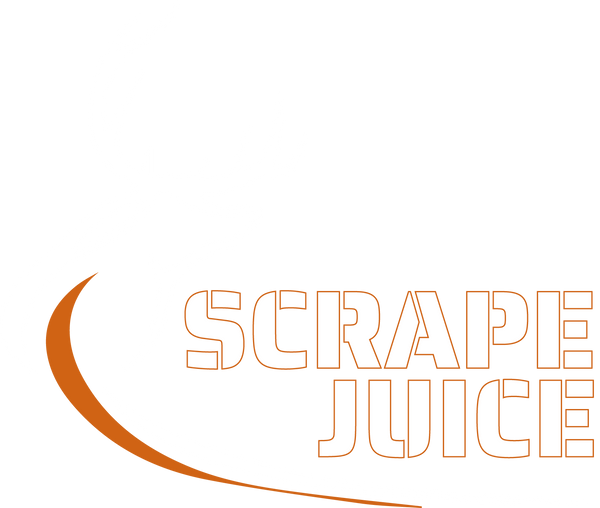
Safety in the Woods: Hunting Safety Tips, Checklist & Best Practices
Share
Safety in the Woods: Hunting Safety Tips, Checklist & Best Practices
Hunting is a time-honored tradition — but nothing is worth risking your safety. Whether you’re pulling a mock scrape with Scrape Juice, heading out with a bow, or scouting with a trail cam, the right preparation keeps you and your hunting partners safe and lets you focus on the hunt. This guide covers the must-know safety practices, a printable checklist, and scent-use tips so you can hunt smarter and safer this season.
Why safety matters
Accidents in the field are preventable when hunters prepare, communicate, and follow simple rules: plan your route, know your gear, and respect firearms and bows. Government agencies and outdoors organizations recommend hunter education, blaze orange during firearm seasons, and treestand safety as top priorities. (Link to local hunter education pages and national resources when publishing.) Outdoor Alabama+1
Quick hunter safety checklist
Print this or save it on your phone before you go:
-
Emergency contact & exact coordinates saved.
-
Blaze orange / visibility gear packed.
-
Fully charged phone + GPS + spare battery.
-
First-aid kit & tourniquet.
-
Map or offline GPS route.
-
Treestand safety harness (inspect before each use).
-
Knife, fire starter, whistle, and signal mirror.
-
Tell someone your plan & exact exit time.
(Place a downloadable button here: “Download Scrape Juice Hunting Safety Checklist — PDF”.)
Before you leave: prep & communication
Scout smart. Mark entry/exit trails and leave the truck keys with a trusted contact. Use trail cams to confirm patterns, but remember cameras alone don’t replace a plan. Tell someone your location, expected exit time, and what to do if you don’t check in. Maps and GPS save lives when the terrain gets tough. onX Maps
Firearm & Archery safety
-
Always treat guns as loaded; keep your finger off the trigger until ready.
-
Confirm the “safe zone of fire” before shooting — know what’s behind your target.
-
For bows, inspect bow limbs, cables, and arrows for damage before every hunt.
-
Follow local firearm seasons and safety regulations and complete hunter education if required. Bucktail Medical Center+1
Treestand and climbing safety
Tree stand falls are a leading cause of serious hunting injuries. Use a full-body safety harness, inspect ladders and straps for wear, and always remain attached to the tree while climbing and descending. If you buy a stand on Scrape Juice for a cam setup or use a climbing stand, check weight ratings and manufacturer guidelines. Outdoor Alabama
First aid & emergency response
A compact first-aid kit with trauma supplies, a tourniquet, and wound-packing material is essential. Know how to treat hypothermia, control major bleeding, and stabilize fractures. Consider a short wilderness first aid course and carry a portable emergency beacon if hunting remote public land. (Link to local first-aid training providers.)
Using deer lures & scents safely
Scrape Juice’s natural lures are designed to attract deer — but safe, legal, and ethical use is critical:
-
Follow local laws for scent use (some states regulate baiting).
-
Use lures at proper distances from your stand to avoid contaminating your shooting lane.
-
Store scents in sealed containers in your pack, and avoid cross-contaminating clothing or gear that you’ll wear into a stand.
-
Combine attractant use with scent control practices so you don’t human-scent your set. (Link to product pages or scent control tips on the Scrape Juice site.) Scrape Juice
Navigation & technology
Use app maps (e.g., onX Hunt), GPS waypoints, and offline maps. Set a waypoint for your truck and for safe exit routes. Keep phones warm and in a dry case — batteries die fast in cold weather. Consider a small satellite messenger or PLB for remote hunts. onX Maps
Weather & wildlife awareness
Check forecasts before heading out and have a plan for sudden weather changes. Understand local wildlife behavior — deer movement patterns change with the rut, and predators may be more active at dawn/dusk. Adjust your plan accordingly and pack layers and shelter materials. Outdoor Life
Post-hunt safety: field dressing & transport
Field dressing should be done carefully: choose a stable, level spot; use clean, sharp knives; and watch for hygiene risks. Use gloves, pack out waste according to local rules, and secure game properly in transport. If you’re alone, consider drag routes and plan for extraction before you shoot.
Trail cameras, UGC & responsible sharing
Trail cam footage is great content for the Hunters Hub — but avoid geotagging precise public-land hotspots. Encourage users to submit photos without location metadata. Adding user-generated content increases dwell time and can boost SEO when moderated and tagged correctly. Facebook
Final thoughts & call to action
Safety in the woods is simple when you plan: use the checklist, equip yourself, follow treestand and firearm rules, and practice good scent hygiene with Scrape Juice products. For quick access, download our printable Hunting Safety Checklist and pin it to your map app.
CTA: [Download the free Hunting Safety Checklist (PDF)] — [Shop Scrape Juice Products] (link to collections page)
FAQ
Q: Is Scrape Juice legal to use everywhere?
A: Laws vary by state — always check local baiting and attractant laws before using deer lures. (Link to state wildlife agency.)
Q: What should be in a hunter first-aid kit?
A: Basics (bandages, trauma dressing, tourniquet, OTC meds) plus gear for hypothermia and emergency signaling.
Q: How far from my stand should I apply lure?
A: Keep attractants outside your shooting lanes and where deer can approach naturally; avoid contaminating your set.
